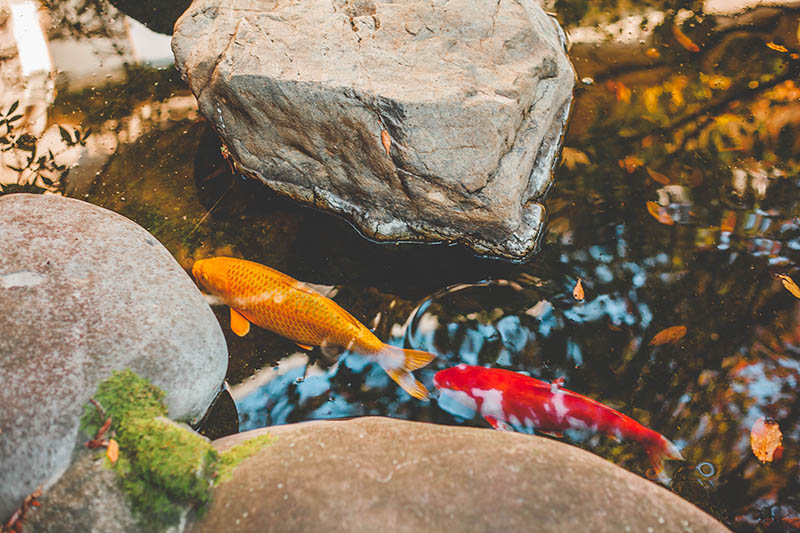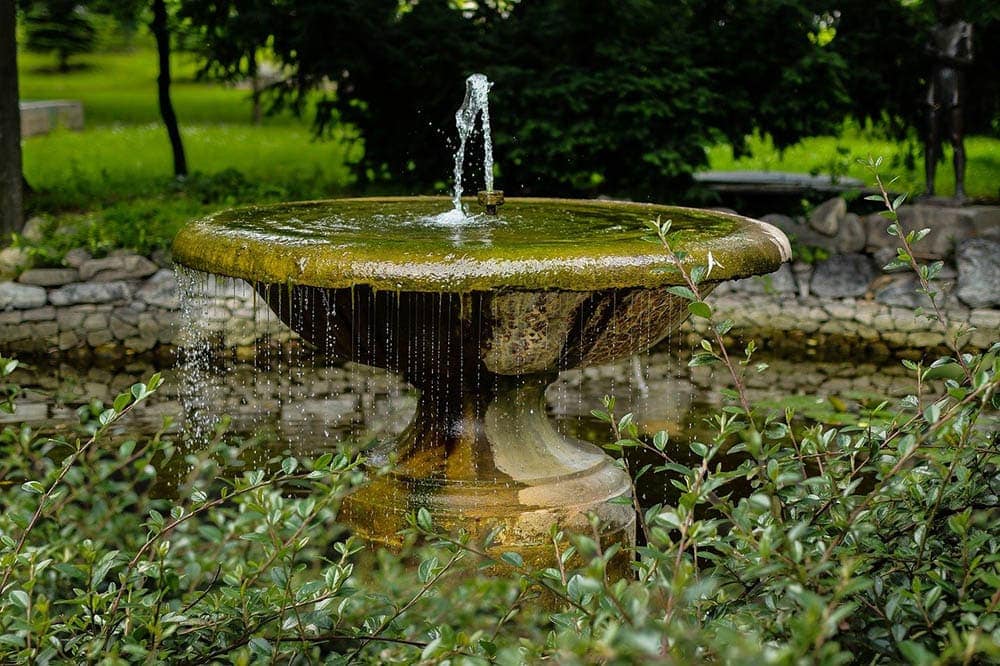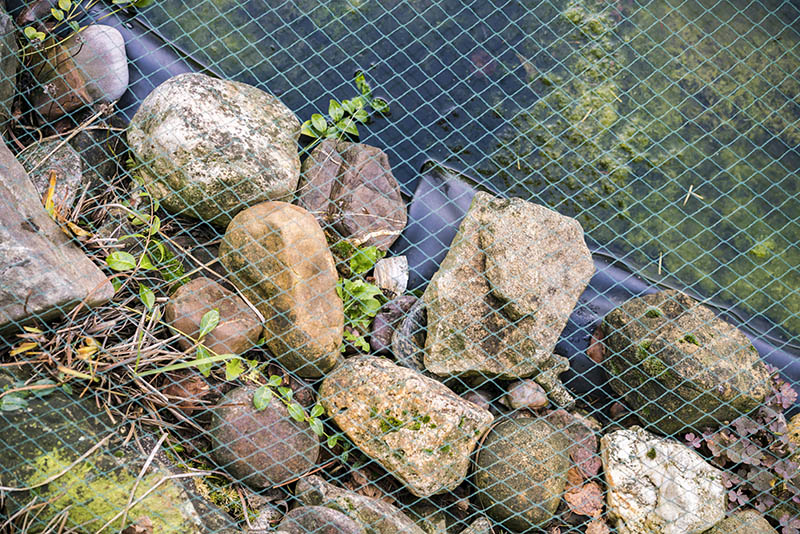If you are a cat lover, it can sometimes be hard to imagine them as stone-cold killers. However, cats can be pretty pesky when it comes to outdoor landscaping features, like fish ponds.
Do you or a neighbor have a fish pond that keeps calling to your cat? If your cat has been hurting or even killing the fish in the pond, it can mean extra restrictions must be put on your cat, or they could even be in danger with the disgruntled neighbors.
If you are looking for a way to protect a fish pond from cats and other predators, we have the list for you. We start with the most straightforward and aesthetically pleasing options for you to consider.

The 8 Methods for Protecting Your Pond Fish from Cats
1. Don’t fill the pond up to the edge.
Start by reducing the water level in your fish pond. Doing this might not be as easy as it sounds, however, especially if you have already installed your fish pond and it is shallow. Don’t reduce the water level low enough to where the fish use the available oxygen too quickly and die.
If you have yet to put your fish pond in, though, you should design it with a defined edge. Most cats don’t like to get wet, so they won’t typically be willing to get into the water to catch the fish. Keep the water level lower than ½ to 1 foot from the edge. This way, even if your cat leans down, they won’t hit the top of the pond to catch the fish.
2. Design your fish pond with hiding spaces from predators.
Even if you have already put your fish pond in, you can always change what goes inside it. For any pet close to being a wild animal, like your pond fish, you should emulate their native environment in their confined space.
In the wild, there are plenty of instances in which a fish needs to hide from predators. Build this concept into your pond by including structures under which they can hide. You might also use pond plants. These restrict the cat’s ability to reach a fish and enhance your pond’s aesthetic. Excellent pond plant options include:
- Water lettuce
- Pygmy water-lily
- Yellow water-lily
- Ceratophyllum submersum
- Nuphar japonica
- Nelumbo nucifera

3. Edge the pond with natural cat deterrents.
If your fish are still getting caught, even with places to hide, try to discourage the cat from visiting the water’s edge. You can do this effectively by lining the edge with a substance that acts as a natural cat deterrent. These include:
- Lavender
- Lemon thyme
- Sprinkle black pepper
- Cayenne pepper
- Citrus peels
- Citrus essential oils
Be careful that this option doesn’t come back to bite you when it rains. Most of the things that cats dislike are also not preferred by fish. Don’t put too much or sprinkle them in a way that will allow them to wash into the pond during rain.
4. Install motion-activated sprinklers.
Playing on the idea that cats don’t like to get wet, you can go the extra mile by installing motion-activated sprinklers. If you already have a sprinkler system set up in your yard, you might just have to put a motion sensor on the sprinklers that are already there.
You can also find individual products that you simply need to hook up to a hose. This way, you don’t have to install an entire sprinkler system just to get rid of a cat or two.

5. Be your own sprinkler with a water gun.
Does installing a motion-activated sprinkler sound like it would cost too much? There is always another solution, though if you aren’t willing to spend money on a problem, it often means you will have to spend more time.
Instead of having a sprinkler do your dirty work, you will have to do it yourself. That means being ready when the cat turns up to spray them with a water gun. It is best to find a long-distance water gun so you can hide away from the pond. This way, if the cat is shy, they will still come out to the pond.
Cats are often creatures of habit, so you should try holding a stakeout at different times of the day to figure out when they typically visit your pond. Spraying them as much as possible a couple of times will usually be enough to stop them from coming back.
6. Install a water fountain.
Another option that involves a bit of money but requires less time is installing a water fountain in the pond. Unlike the sprinkler idea, this option brings plenty of unique benefits to the table.
A water fountain helps improve the quality of a fish’s life in a pond because it acts as an extra aerator for the pond. Thus, it increases the possible gaseous exchange that your fish has within the confines of the pond and keeps them healthier. Also, a water fountain can be quite attractive.
The more of the pond that the fountain covers, the less likely the cat will want to sit at the edge. Even catching a little of the spray isn’t preferable for them.

7. Use a pond cover.
These next options are not preferable for those who enjoy the overall aesthetic of a fish pond. However, if you don’t know what else to try, they are workable options. The first is to use a pond cover. This is essentially a net tent that you can pop open and fold back into the bag as and when you need it.
The benefit of pond covers is that they are lightweight and easy to move. This way, the pond is still accessible if you need to clean it. However, they do tend to stick out like a sore thumb in the natural environment.
8. Put netting over the pond.
You can also cover the pond using tight mesh netting over the top. This option is less noticeable than a cover but still effectively does the job. Finally, you can tamp the netting down over the top of the pond using rocks at the edge or sunken pegs. This isn’t as easy to move as the pond cover but is less visually intrusive.


Conclusion
As hard as it is to imagine your fluffy friend scooping their paw into your fish pond, cats are natural predators, and fish swimming around in a pond may just be too difficult for some felines to resist. It’s always better to be safe rather than sorry—no matter how docile your cat may be. Protecting your fish from the clutches of your cat’s claws is essential, and hopefully, the tips above will help you do just that!
Featured Image Credit: Niek Goossen, Shutterstock
